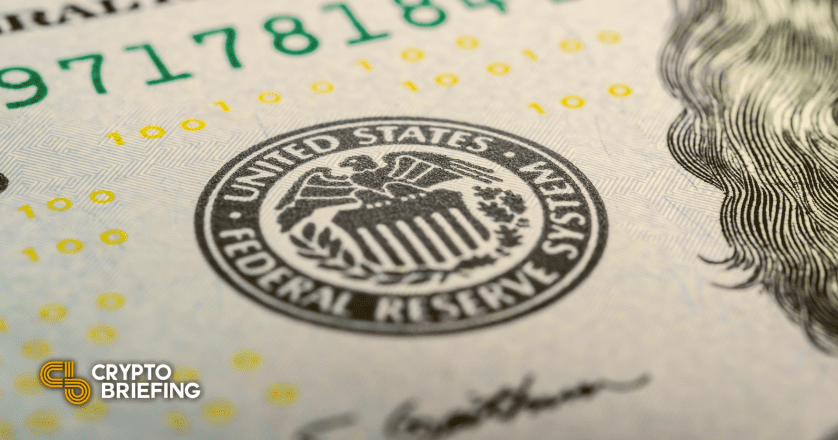Bitcoin to Beat Gold Not Digital Dollar, Says Fed Chairman
The U.S. Federal Reserve chairman’s critical view of Bitcoin seemed to have created fear in the market.

Key Takeaways
- U.S. Fed Chairman Jerome Powell spoke about digital currency plans in an online event.
- Powell's comments on Bitcoin's volatility, energy requirements and private issuance caused a drop its price.
- The Fed chair seemed slightly comfortable with stablecoins, but was not too optimistic about their role in future payments.
Share this article
The U.S. Fed chairman Jerome Powell said that Bitcoin is a speculative asset like gold and does not see it as a replacement for the American dollar. And certainly not a digital dollar.
Fed Not Worried About Bitcoin
Powell spoke at the Innovation Summit by the Bank of International Settlements (BIS). The online conference’s most pressing issues were the rise of Bitcoin, the digital dollar plans, and stablecoins.
On Bitcoin, Powell said that BTC is a “speculative asset,” with no backing, and more a substitute for gold than the dollar. He addressed the risks of holding crypto assets due to their volatility and energy requirements for mining. He added,
“Crypto-assets—see Bitcoin—are highly volatile and therefore, not useful as a store of value. They are not backed by anything, they’re more of an asset for speculation.”
Despite drawing comparisons with gold, Powell’s comments failed to instill growth sentiments in the market.
Federal Reserve Chairman, "Bitcoin is a substitute for gold" pic.twitter.com/tiiduHVK2D
— Documenting ₿itcoin 📄 (@DocumentingBTC) March 22, 2021
Powell’s emphasis on the dollar’s strength against “private cryptocurrencies” sparked a negative reaction in the market.
He said that private offerings like Bitcoin have tried to supplement the national fiat currency but have been a failure so far. The distinction between government-issued currencies and privately-issued cryptocurrencies caused bearish momentum in the leading asset’s price.
Bitcoin dropped to lows of $56,500 this morning after Powell’s address. The cryptocurrency failed to break above the $60,000 resistance last week. BTC has been in a parallel range between $57,750 and $56,500.
Investors are uncertain about Bitcoin’s next move as the funding rate for perpetual futures on exchanges has been neutral since last week.
Private vs. Government Digital Dollar
The progress around the digital dollar and the Fed’s views of private cryptocurrencies exposed the market to the biggest fears of regulatory bans.
The same term, “private cryptocurrencies,” was used in an Indian crypto bill—due to the voting process soon—which seeks to ban all private offerings except the ones issued by the country’s central bank.
Powell reiterated his stand on taking a cautious approach when it comes to digital dollar launch. “We don’t need to rush this project, and we don’t need to be first to market,” he said.
On stablecoins, Powell noted that they are an improvement over “crypto-assets,” however, he was certain that even fiat-backed crypto would not form the basis of future payments.
Further, the financial service sector has recently grown apprehensive to the possibility of central bank digital currency (CBDC) eliminating the middlemen of the financial world in banks, card companies, etc.
A CBDC would further allow the Federal Reserve to directly control interest rates and send stimulus checks at a consumer level if people open an account directly.
Together, the U.S. government and Federal Reserve could disrupt the cryptocurrency markets and adversely affect the financial service businesses.
Still, the recent adoption of cryptocurrencies by MasterCard, PayPal, Visa, and even leading U.S. banks comes as welcome news in the “private” sectors’ fight against the Fed.
Disclosure: The author held Bitcoin at the time of press.
